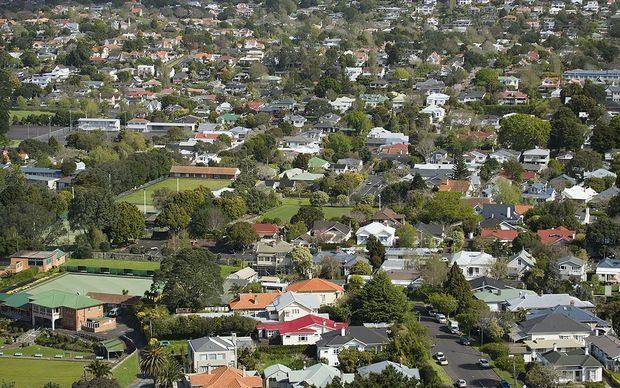Local authority Local time Sunday 8:00 AM | Population 6,324 | |
 | ||
Weather 21°C, Wind NE at 24 km/h, 90% Humidity North Grafton, New Zealand, Newmarket, New Zealand | ||
Epsom is an exclusive, affluent suburb of Auckland, New Zealand. It is located in the centre of the Auckland isthmus between Mount Eden and One Tree Hill, south of Newmarket, and five km south of the city centre.
Contents
- Map of Epsom Auckland New Zealand
- Notable features
- Notable buildings
- History
- Education
- Politics
- Notable residents
- References
Map of Epsom, Auckland, New Zealand
Notable features
Named after the town in England noted for its horse-racing, Epsom also has a race track. The Alexandra Park Raceway lies in the south-eastern quarter of Epsom where it is located next to the Epsom Showgrounds. The broad, flat pastureland here at the intersection of Green Lane West and Manukau Roads was used for sporting events from the 1850s onwards but the two venues were only formally established around 1900. The Alexandra Raceway was named after the Princess of Wales later Queen Alexandra. The Epsom Showgrounds host the annual Auckland Royal Easter Show.
The major road running through Epsom is Manukau Road. Manukau Road links central Auckland on the east coast with its airport and its west coast harbour, the port of neighbouring Onehunga. It was one of the 19th century's main routes south from Auckland. The main route was Great South Road which forms Epsom's north-eastern boundary with Remuera. The link to the Port of Onehunga meant Manukau Road became the route for horse buses, horse trams and, after 1902, electric trams. A large number of suburban houses and villas were built along it.
Several large residences were built in Epsom's open country during the mid to late 19th century surrounded by large estates and smaller working farms. As these were subdivided towards the end of the 19th century the landscape changed dramatically. One major landowner, Dr John Logan Campbell, gave a large portion of his estate to the city and that is now Cornwall Park.
Epsom's most notable parks and reserves are the volcanic cone of Mount Saint John and Marivare Reserve at the intersection of Manukau and Ranfurly Roads with a War Memorial in the form of an arch made of Volcanic rock together with sports grounds Meville Park and Windmill Park. As well as reserves located in Epsom itself the suburb is ringed with public parks often given to the city by Epsom residents.
To the west is Mt Eden with the Mount Eden Domain. To the east is Cornwall Park and One Tree Hill Domain.
Bounding suburbs are: north Newmarket and Grafton; north-east Remuera; east Greenlane; south-east Cornwall Park; south Three Kings and Onehunga; west Sandringham and Mount Eden.
Notable buildings
History
From the 1840s until the 1890s Epsom was noted for its rich pasture land which supported both dairy herds and grain crops. Towards Mt Eden is Windmill Road which was the site of the Bycroft Windmill.
Initially large country houses and farms dotted the landscape but from the 1890s onwards suburban development spread southwards from Newmarket across the fields of Epsom. Most of the housing in the area dates from 1900 to 1930, often large houses built solidly of wood, many in the Californian Bungalow or "Stockbroker Tudor" styles.
The area has been long noted for its tree-lined, well-ordered streets, parks and a great variety of architecture, with century-old villas competing with late 20th-century modern housing. Following WWII increasing numbers of the larger properties were subivided and smaller houses appeared. Since the early 1990s there has been a considerable amount of "infill" housing with clutches of townhouses altering the streetscapes in some parts of Epsom.
Education
Epsom is noted for several schools including St Peter's College (a successor of Auckland's earliest school), Dilworth School, Diocesan School For Girls, St Cuthbert's College, Epsom Normal Primary School, Auckland Normal Intermediate, Auckland Grammar School and Epsom Girls' Grammar School.
Due to the phenomenon of the "Grammar Zone", parents wishing to live in-zone for Auckland Grammar and Epsom Girls' Grammar, housing in Epsom has become desirable and expensive. Houses within the Grammar Zone come with a premium of at least NZ$100,000 compared with an identical house just outside the Grammar Zone.
The University of Auckland Faculty of Education (formerly known as the Auckland College of Education) campus is also situated at this district.
Politics
Epsom is also the name of an electorate that includes Epsom, Remuera, Parnell, Broadway Park, and part of Balmoral. Former Auckland Mayor Christine Fletcher, was elected as Member of Parliament for Epsom in 1996. This electorate as of 2005 is the wealthiest in the country, with an average income well above the national average.
The Epsom electorate has historically been a right wing seat and, up until 2005, was considered a 'safe' seat for the National party. In 2005 the electorate took a swing further to the right, electing the ACT candidate Rodney Hide.
The seat is currently held by David Seymour of the ACT Party. The suburb of Epsom comprises roughly 20% of the population of the Epsom electorate. The local councillors for Epsom suburb are split across two council wards, the Eden-Albert Ward represented by a majority of centre-left leaning City Vision (Auckland political ticket) councillors, and Hobson Ward, which is served by centre-right leaning Citizens and Ratepayers Now councillors.
